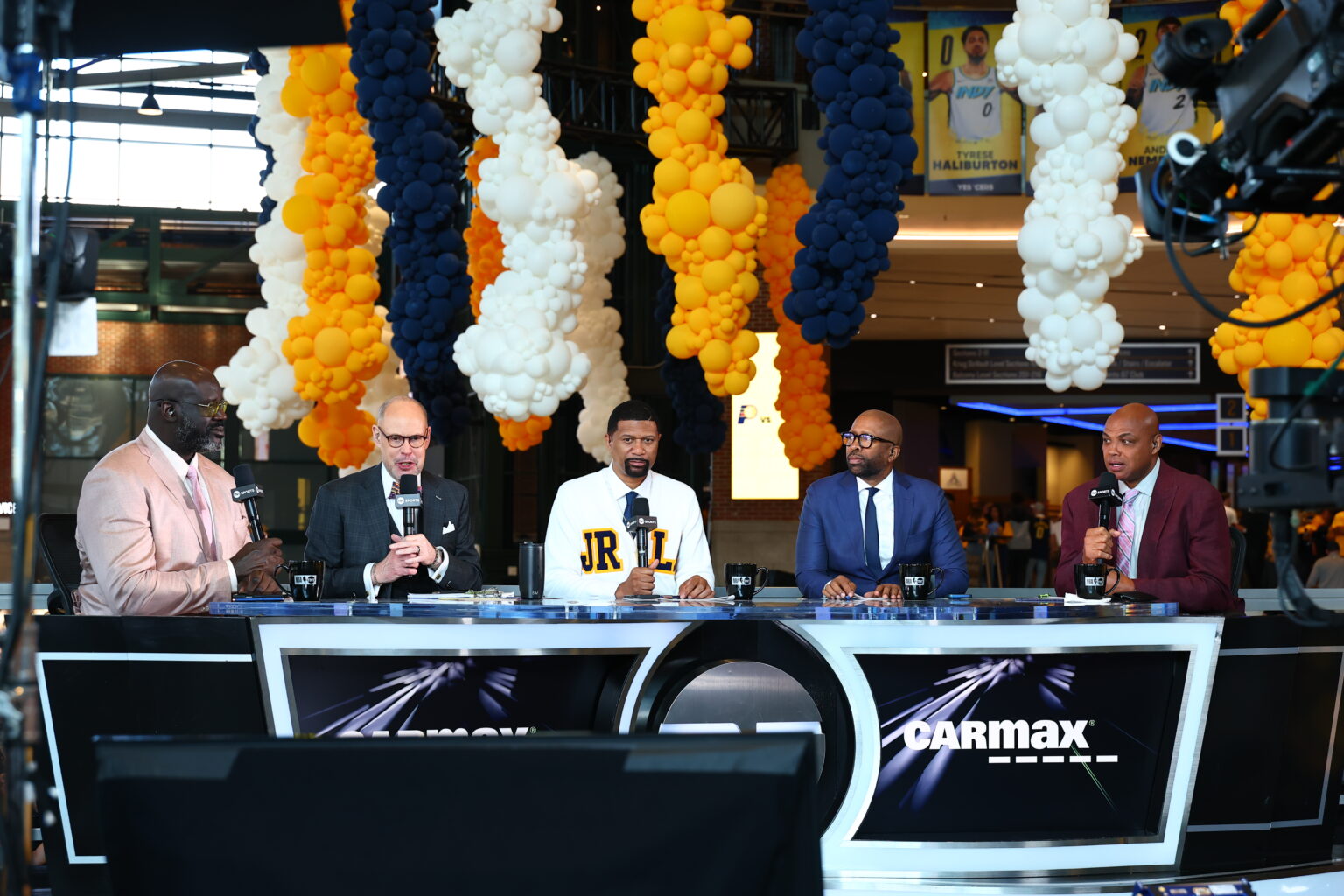The End of an Era: Reflecting on the Decline of “Inside the NBA” and Its Cultural Impact
Last week, it felt as though the sports world was bidding farewell to a beloved institution-“Inside the NBA.” The final episodes seemed more like a prolonged goodbye to Ernie Johnson, Charles Barkley, Shaquille O’Neal, and Kenny Smith than a mere preview of the Eastern Conference Finals. Yet, despite the apparent curtain call, the spirit of the show persists, evidenced by unexpected moments like Shaq’s surprise appearance on ESPN/ABC’s “NBA Countdown” in Oklahoma City just before the start of the NBA Finals.
Shaq’s Surprise Appearance: A Nostalgic Throwback
In a spontaneous on-air cameo, Shaquille O’Neal greeted hosts Malika Andrews and Bob Myers with his signature deep voice, then handed his microphone to Stephen A. Smith, jokingly instructing him to hold it. Shaq proceeded to playfully mimic throwing punches at former rival Kendrick Perkins, eliciting genuine laughter from the set. The moment was unfiltered, unscripted, and captured the essence of what made “Inside the NBA” so captivating: authentic, unpredictable entertainment that blurred the lines between sports analysis and comedy.
The Unique Chemistry That Made “Inside the NBA” a Cultural Phenomenon
The show’s success hinged on its core cast: Ernie Johnson’s straightforward professionalism, Charles Barkley’s brutally honest humor, Kenny Smith’s balanced wit, and Shaq’s larger-than-life personality. Together, they transformed game nights into a blend of sports talk and comedy, creating a viewing experience that fans eagerly anticipated each week. Their chemistry was unmatched, turning basketball into a lively, humorous spectacle that resonated across generations.
The Shift Toward Entertainment-Driven Sports Coverage
However, the landscape of sports broadcasting has shifted dramatically. Networks now seem more inclined to produce content that prioritizes entertainment over insightful analysis. For example, TNT’s “MacZone” during the French Open, featuring brothers John and Patrick McEnroe, attempts to emulate the relaxed banter of “ManningCast,” but often falls into the trap of superficial chatter about unrelated topics like the New York Knicks, rather than focusing on tennis itself. Similarly, “NHL on TNT” sometimes appears desperate to generate buzz, with former player Paul Bissonnette serving as a comedic foil rather than a serious analyst.
The Rise of NBA Podcasts and the Culture of Superficiality
This trend extends into the realm of NBA podcasts, where much of the content is characterized by shallow debates, recycled takes, and juvenile humor. Many fans and players have expressed frustration with the current discourse, which often emphasizes sensationalism over substance. The proliferation of these “empty calories” reflects a broader shift in sports media-favoring quick hits and viral moments over nuanced understanding.
The Influence of “Inside the NBA” and Its Legacy
“Inside the NBA” was once the gold standard for sports entertainment, blending humor, camaraderie, and genuine insight. Its format was designed to entertain, not educate, and that was part of its charm. Former players like Kendrick Perkins have criticized the casual approach of the show, suggesting that it sometimes sacrifices depth for laughs. Yet, the show’s chemistry-built on mutual respect and shared history-allowed it to thrive.
The Challenges of Replicating a Cultural Icon
As “Inside the NBA” transitions away from its traditional format, attempts to imitate its success often fall flat. Networks and analysts try to recreate the magic with contrived debates or superficial banter, but these efforts rarely capture the authentic spontaneity that made the original so beloved. For instance, during pregame shows, commentators often resort to basic summaries or trivial discussions, neglecting the deeper stories and strategic nuances that truly engage dedicated fans.
The Future of Sports Broadcasting: From Substance to Spectacle
The current trend suggests that sports media is increasingly driven by spectacle rather than substance. While this may attract casual viewers seeking quick entertainment, it risks alienating fans who crave meaningful analysis and storytelling. The success of “Inside the NBA” was rooted in its ability to balance humor with genuine basketball knowledge-something that cannot be easily replicated.
Conclusion: Embracing the End of an Iconic Chapter
There will never be another “Inside the NBA,” and perhaps that’s for the best. Its unique blend of humor, honesty, and camaraderie set a standard that is difficult to match. As sports broadcasters continue to chase fleeting viral moments and superficial content, they should remember the enduring appeal of authentic, unscripted entertainment. The legacy of “Inside the NBA” reminds us that sometimes, the most memorable moments come not from carefully curated scripts but from spontaneous, genuine interactions that celebrate the love of the game.

